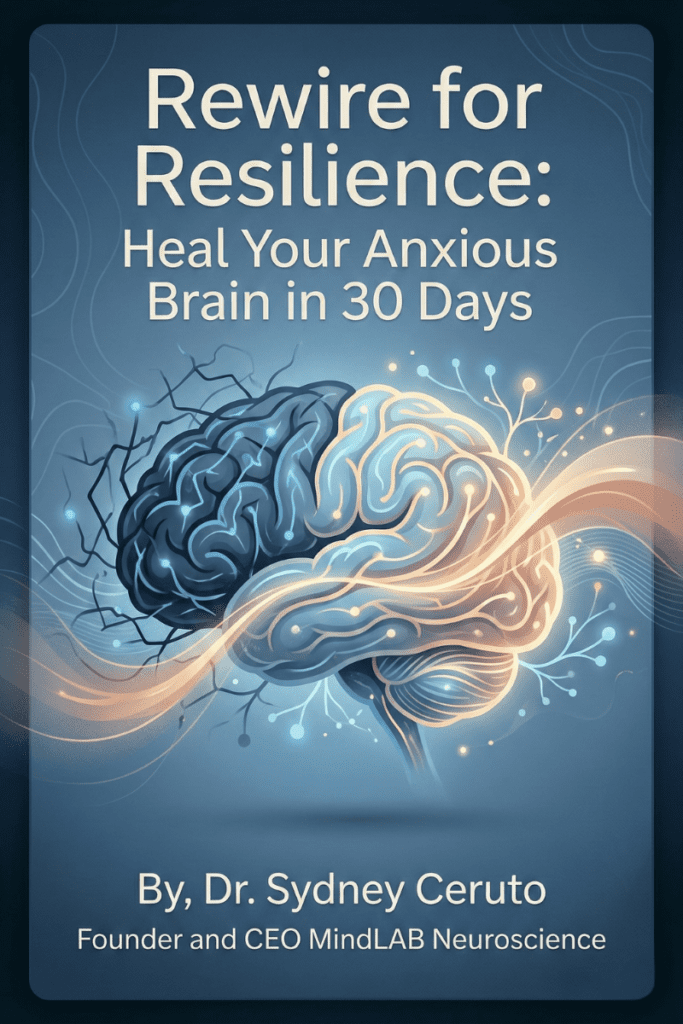Goal setting is an art, and in ‘Blueprints for Success,’ I explore how it intertwines with the science of neuroscience. It’s widely acknowledged that the most accomplished individuals leverage diverse strategies to meet their goals. Yet, the real game-changer could be our brain’s own wiring—how might this knowledge amplify our goal-setting capabilities?
Central to our brain’s adaptability is neuroplasticity, its remarkable ability to forge new neural connections throughout life. This neuroplasticity is not just a feature; it’s the bedrock of skill and habit development—the very essence of goal setting.
Understanding the brain’s inner workings is crucial for effective goal setting. It allows us to craft strategies that resonate with our cognitive processes, making goal achievement not only more efficient but also more natural. Whether the aim is to advance in one’s career, enrich personal relationships, or pioneer new business ventures, the brain’s innate mechanisms stand ready to assist.
Throughout this article, I will delve into how neuroscience principles can shape our goal-setting practices and bolster our progress. Success, as I will demonstrate, is a continuous journey, one that can be enriched and sustained through the insights provided by our brain’s potential.
As we embark on this journey, I invite you to join me in unlocking the brain’s secrets, laying down the neural blueprints for success that are as grounded in science as they are in action.
How the Brain Shapes Goal Setting
As we venture into the realm of goal setting, it’s essential to recognize that our brains are not just passive receivers of our desires and plans; they are active participants in the process. The goal-setting brain is a marvel of evolution, equipped with areas specialized in envisioning the future, evaluating options, and forging the determination needed to see tasks through to completion.
The prefrontal cortex, the area just behind your forehead, acts as the command center for this operation. It’s where we weigh decisions, juggle variables, and project the outcomes of our actions. When we set goals, this region lights up with activity, orchestrating thoughts and actions in alignment with our objectives.
But it’s not just about the cold, hard logic of decision-making. Our emotional brain plays a pivotal role, too. The limbic system, which includes structures like the amygdala and hippocampus, processes emotions and memories, adding color and weight to our goals. It’s the difference between wanting to achieve something because we ‘should’ and pursuing a goal we’re passionate about.
Moreover, the brain’s reward system sprinkles a little magic into the mix. When we set a goal and take steps towards it, our brain releases dopamine, a neurotransmitter associated with pleasure and motivation. This release can create a sense of satisfaction and drive, propelling us forward. It’s nature’s way of rewarding our goal-directed behavior, encouraging us to repeat beneficial actions.
Understanding these aspects of the goal-setting brain can transform the way we approach our ambitions. By aligning our goals with the brain’s natural functioning, we can create a more harmonious and effective path to success. It’s about working with our brain’s wiring, not against it.
In the following sections, I’ll share how we can set SMART goals that resonate with our cognitive architecture, form habits that our brain will thank us for, and navigate around the mental roadblocks that can impede our progress.
The SMART Framework: Structuring Goals for Success

Crafting goals that resonate with our brain’s design, especially in the context of goal setting, begins with the SMART framework, which stands for Specific, Measurable, Achievable, Relevant, and Time-bound. This approach not only provides clarity and direction but also aligns with the brain’s preference for well-defined targets.
- Specific: Our prefrontal cortex thrives on specificity. Vague goals can lead to vague results. By being specific, we give our brain a clear target to aim for, which helps us focus our attention and resources more effectively.
- Measurable: The brain loves to track progress. Measurable goals allow us to see the incremental changes that occur as we move closer to our target. This visibility can be incredibly motivating, as each milestone achieved triggers the brain’s reward system, reinforcing our goal-directed behavior.
- Achievable: Goals should stretch our capabilities but remain within reach. When we set achievable goals, we build self-efficacy—the belief in our ability to succeed. This belief activates neural circuits associated with positive thinking and perseverance, essential components for overcoming challenges.
- Relevant: The limbic system, our emotional center, engages more deeply with goals that are relevant to our values and desires. When goals are meaningful, they have the power to mobilize our energy and passion, which are powerful drivers for sustained effort.
- Time-bound: Imposing deadlines can create a healthy sense of urgency. The brain’s time-keeping functions are honed to prioritize tasks with a clear endpoint, helping us to manage our time and resources more efficiently.
By setting SMART goals, we create a structure that the brain can work with effectively. This structure acts as a scaffold, supporting our cognitive processes and guiding our actions toward the desired outcome.
Next, I’ll discuss the critical role of habit formation in achieving our goals and how we can leverage the brain’s plasticity to make lasting changes.
Building Habits: The Brain’s Secret to Sustained Progress
In goal setting, habit formation is the brain’s way of automating repeated behaviors to save energy for more complex tasks. This process is rooted in the basal ganglia, a group of nuclei in the brain responsible for habit formation, among other functions. When we establish a habit, we essentially create a neural shortcut that makes it easier to perform certain actions without conscious effort.
To form a new habit, we must repeat an action consistently until it becomes automatic. The repetition strengthens the neural connections associated with the behavior, making it more likely to be repeated in the future. This is why consistency is key in habit formation; the more we do something, the more ingrained it becomes in our brain’s circuitry.
One effective strategy for building new habits is ‘habit stacking,’ which involves adding a new habit to an existing one. By linking new behaviors to established routines, we can piggyback on the strength of existing neural pathways, making it easier for the new habit to stick.
Our environment can significantly influence our habits. By designing our surroundings to make desired behaviors easier and undesired behaviors harder, we can nudge our brains in the right direction. This might involve removing temptations that lead to unproductive habits or setting up cues that trigger productive behaviors.
The brain’s reward system is highly responsive to immediate rewards, so giving ourselves small rewards for practicing new habits can reinforce them. These rewards signal to the brain that the behavior is worth remembering and repeating.
It’s natural for progress to slow down or plateau when forming new habits. During these times, it’s important to remind ourselves of the neuroplasticity at play. Even when progress feels slow, our repeated efforts are still reinforcing neural pathways, and with time, the habit will become stronger.
By understanding and leveraging the neuroscience of habit formation, we can create a robust framework for achieving our goals. Habits are the building blocks of long-term success, and with the right approach, we can train our brains to make the journey toward our goals not just possible but natural.
Overcoming Mental Obstacles on the Path to Success
The path to goal setting success is rarely without obstacles. Procrastination, fear of failure, and self-doubt are common hurdles that can derail even the most well-intentioned efforts. Fortunately, neuroscience offers insights into how we can overcome these barriers.
- Procrastination: Procrastination is not simply a matter of poor time management; it’s a complex psychological behavior that involves the prefrontal cortex and the limbic system. The prefrontal cortex is responsible for decision-making and planning, while the limbic system is one of the oldest and most dominant portions of the brain that seeks immediate pleasure. When the limbic system overrides the prefrontal cortex, procrastination occurs. To combat this, we can use techniques such as the “five-minute rule,” where we commit to engaging in a task for just five minutes. Often, this is enough to get past the initial resistance and jump-start our productivity.
- Fear of failure: Fear of failure is rooted in the amygdala, the part of the brain involved in our fear response. While this response can be protective, it can also be paralyzing when it comes to pursuing our goals. To mitigate this fear, we can practice reframing our perspective on failure, viewing it as a learning opportunity rather than a threat. This cognitive reframing can reduce the amygdala’s response over time, making us less reactive to the fear of failure.
- Self-doubt: Self-doubt often arises from a brain network known as the default mode network (DMN), which is active when we engage in introspection and self-referential thoughts. While the DMN is important for self-awareness, it can also be the source of self-critical thoughts. Mindfulness meditation has been shown to reduce activity in the DMN, which can help quiet self-doubt and enhance our focus on the present moment.
In goal setting, resilience is the mental reservoir of strength that we draw on in times of need to carry us through without falling apart. And while it may seem like some people are naturally more resilient than others, resilience is actually a skill that can be developed and enhanced over time. The brain’s capacity for neuroplasticity ensures that we are not fixed in our ways; we can learn from experiences and adapt our responses to challenges.
In my practice of neuroscience-based coaching, I focus on leveraging the principles of neuroplasticity to foster resilience. This approach involves understanding how thoughts, behaviors, and emotions are interconnected and how they can be modified to support personal growth and goal achievement.
Measuring Success: A Neuroscientific Perspective
The journey toward goal-setting success is as much about the destination as it is about the path we take to get there. Measuring success isn’t solely about the end result; it’s also about tracking progress, celebrating small victories, and learning from the process. From a neuroscientific standpoint, the act of measuring and acknowledging progress can be incredibly reinforcing.
Each time we check off a task leading toward a larger goal, our brain releases dopamine, a neurotransmitter that not only makes us feel good but also motivates us to repeat the behaviors that led to that success. This biological reward system can be harnessed to strengthen our commitment to our goals. By setting up milestones and recognizing our achievements, we can create a feedback loop that keeps our brains engaged and motivated.
The hippocampus, a part of the brain critical for learning and memory, plays a significant role in reflecting on what we’ve accomplished and what we’ve learned along the way. This reflection is crucial for measuring success because it allows us to consolidate what works and adjust what doesn’t, enhancing our strategies for future endeavors.
While quantitative measures, such as sales numbers or project completion rates, are important, qualitative measures are equally valuable. How have our experiences enriched our understanding? What new skills have we acquired? How have our relationships or networks expanded? These are all qualitative aspects that contribute to our overall success.
To effectively measure success, it’s helpful to set up systems that make tracking progress straightforward and consistent. This might involve regular check-ins, journaling, or using apps and tools designed to monitor various metrics. The key is to choose methods that resonate with you personally and that you’ll use consistently.
By taking a neuroscientific approach to measuring success, we can create a more holistic and satisfying experience on our path to achieving our goals. It’s not just about reaching the peak; it’s about valuing the climb and learning from each step we take.
Embracing the Brain’s Power for Lifelong Success
As we’ve explored the neuroscientific principles behind effective goal setting, it’s clear that our brains are intricately involved in every step of the journey toward success. By understanding and leveraging the way our brains work, we can create a powerful blueprint that not only guides us to our desired outcomes but also enhances our overall well-being along the way.
Neuroplasticity has shown us that our brains are capable of incredible change and adaptation. This gives us the freedom to continuously evolve our strategies and approaches to meet our ever-changing goals. The SMART framework, the power of habit formation, overcoming mental obstacles with neuroscience-based coaching, and measuring success through both quantitative and qualitative lenses are all parts of a comprehensive strategy grounded in brain science.
As we apply these insights, we cultivate a mindset that is not fixed but growth-oriented, one that embraces challenges as opportunities for development and sees setbacks not as failures but as integral parts of the learning process. This mindset, supported by our brain’s natural functions, is what will sustain us through the ups and downs of any endeavor.
In closing, remember that the journey to success is personal and unique. The neuroscientific principles discussed here are tools to be adapted to your individual circumstances and goals. Use them to craft your own blueprint for success, one that resonates with your aspirations and is flexible enough to grow with you.
The brain is your ally in this journey, and with a deeper understanding of its workings, you’re well-equipped to navigate the path to achieving your goals with confidence and clarity.
What is neuroplasticity and how does it relate to goal setting?
Neuroplasticity is the brain’s ability to form new neural connections throughout life. This flexibility is fundamental for skill and habit development, making it crucial for effective goal setting and personal growth.
How does the SMART framework align with how our brains work?
The SMART framework helps set goals that are specific, measurable, achievable, relevant, and time-bound. This clarity and structure resonate with our brain’s natural preference for well-defined targets and support successful goal achievement.
What role do habits play in reaching our goals?
Habits automate repeated behaviors, making actions easier and less mentally taxing over time. By forming and reinforcing positive habits, we create neural shortcuts that make progressu003cbru003etoward our goals more efficient and sustainable.
How can neuroscience help overcome procrastination and fear of failure?
Neuroscience shows that procrastination and fear of failure involve specific brain regions and can be managed with strategies like the “five-minute rule” or reframing failure as a learning opportunity. These techniques help reduce mental barriers and promote action.
Why is measuring progress important on the path to success?
Tracking progress releases dopamine, which motivates us to keep working toward our goals. Recognizing milestones and reflecting on achievements reinforce positive behaviors and enable us to adjust our strategies for continued success.
Can resilience be developed through neuroscience-based coaching?
Yes, resilience is a skill that can be enhanced by leveraging neuroplasticity and understanding how thoughts, behaviors, and emotions interact. Neuroscience-based coaching uses these principles to foster greater mental strength and adaptability.
How does Dr. Sydney Ceruto’s approach to coaching use neuroscience?
Dr. Ceruto integrates neuroscience, neuroplasticity, and neural pathway rewiring into heru003cbru003ecoaching to help clients achieve lasting positive change. Her methods are grounded in science and focus on building resilience and well-being.
#goalsetting #neuroscience #brainbasedstrategies #neuroplasticity #successmindset #achievementpsychology #mentalresilience #neurocoaching #habitformation #cognitivegrowth #mindfulsuccess #neurofeedback #executivefunctioning #mentalclarity #peakperformance #neuroleadership #behavioralchange #thoughtpatterns #emotionalintelligence #lifeoptimization





